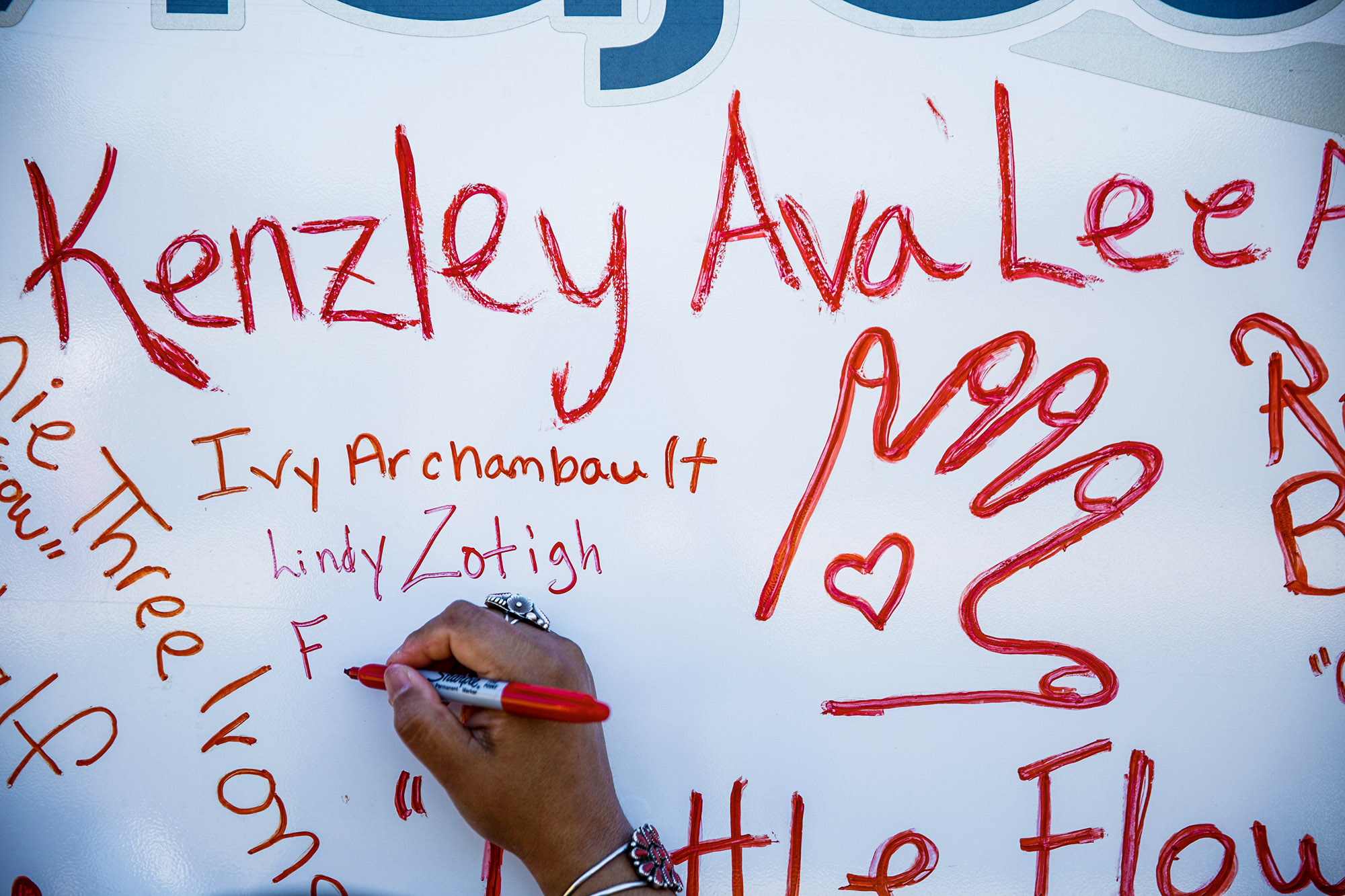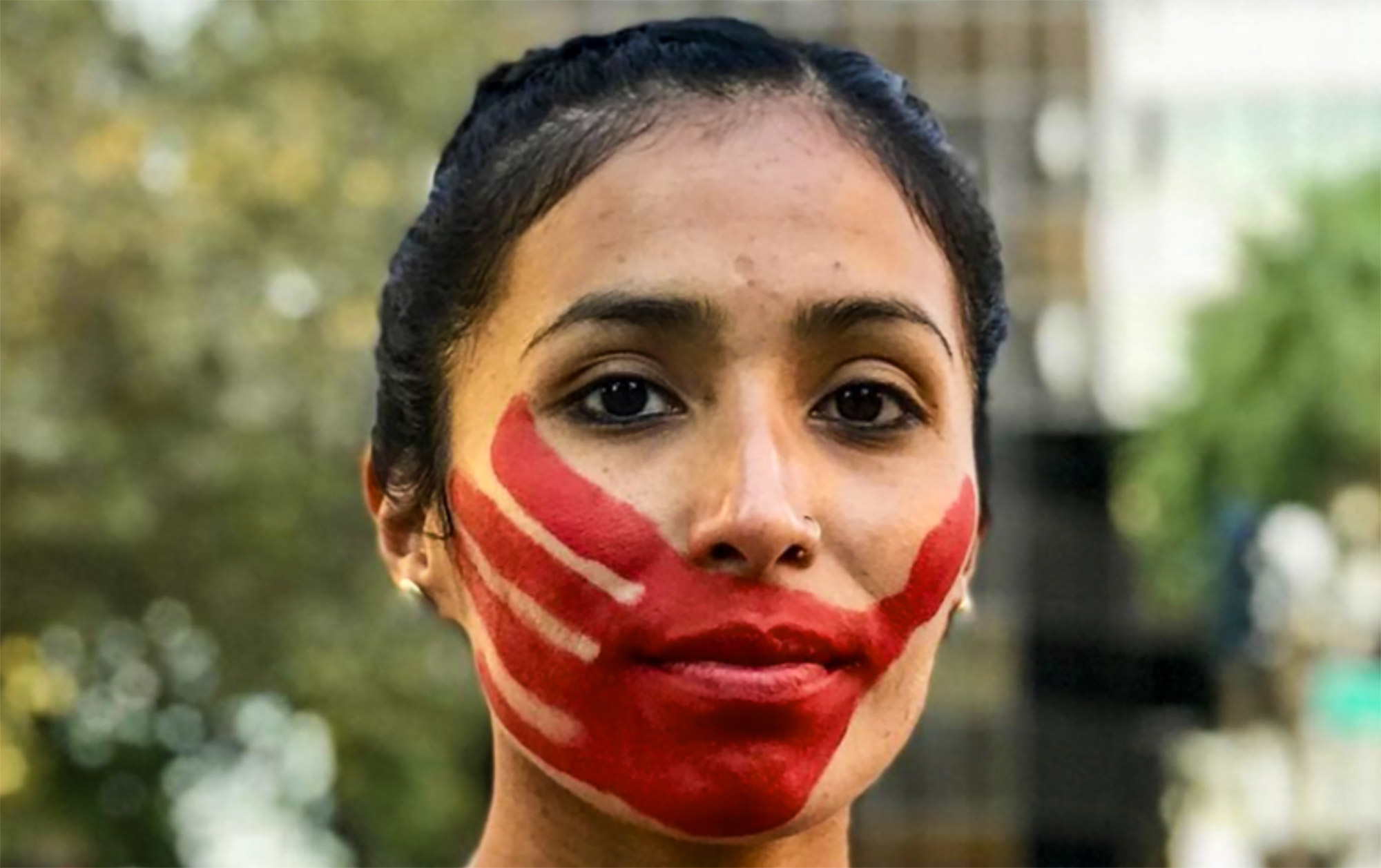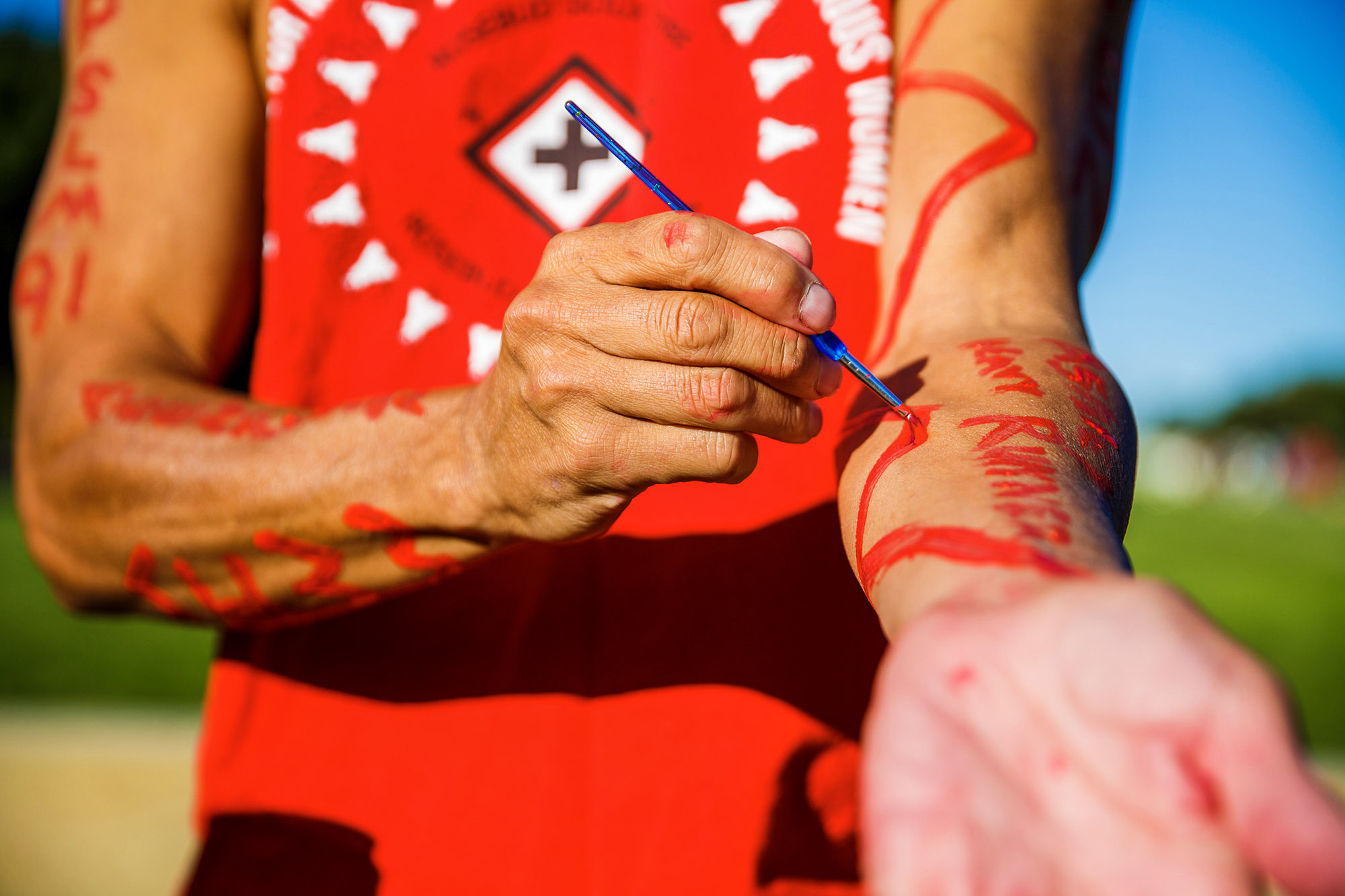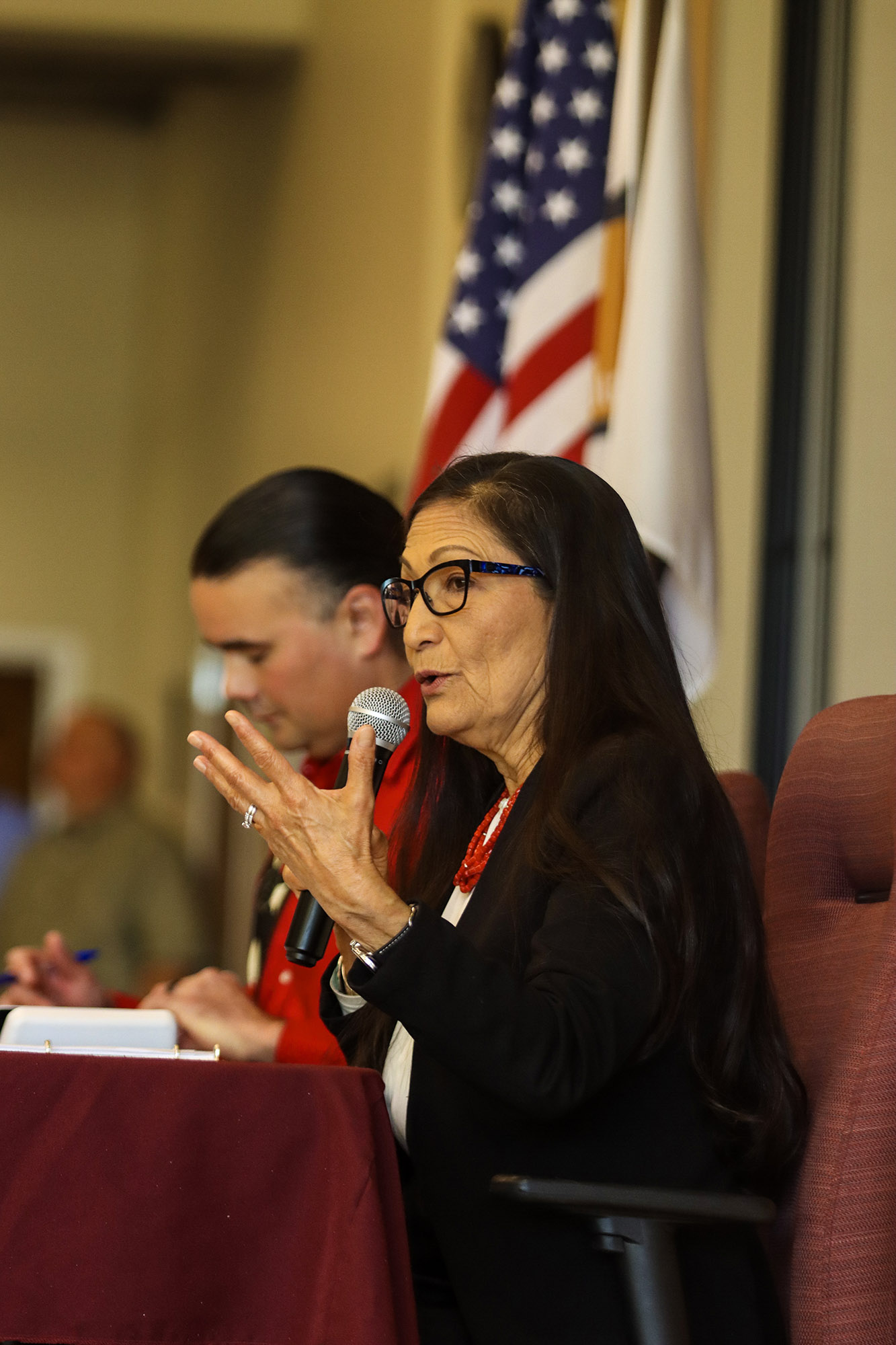Indianz.Com > News > Cronkite News: Native women continue to push for action on missing and murdered relatives

MMIP task forces are given years to solve a problem centuries in the making
Monday, October 2, 2023
Cronkite News
WASHINGTON, D.C. — Jason Chavez acknowledges that members of Arizona Gov. Katie Hobbs’ Task Force on Missing and Murdered Indigenous People face a “big ask” – to “reduce and end violence against Indigenous people” in the state.
But Chavez, Hobbs’ director of tribal affairs, said he is “confident” the task force can succeed in the three years it has been given to meet that goal.
If he’s right, Arizona would do what no other task force on the state or federal level has been able to accomplish after years of work.
At least 10 states and various federal agencies have launched efforts to address the problem of missing and murdered Indigenous people. But, charged with solving in a few years an issue that took centuries to develop, those efforts have had to grapple with historical neglect, modern bureaucracy and myriad disparities that would require a transformation of Indian Country’s public services to be resolved.
Arizona has ranked third in the nation since 2019 for the number of missing Indigenous people, according to data collected by the National Missing and Unidentified Persons System (NamUs). Within that time span, the state has also held the title for having the most unidentified missing Indigenous persons in the country.
Hobbs signed an executive order in March creating the 14-member task force of lawmakers, state officials, tribal representatives and law enforcement officials. The order requires the task force to work with state, federal and tribal agencies to propose solutions to the problem, and to submit a report of its activities and a list of recommendations to the governor by Dec. 1 of each year.
But reports and policy suggestions in other states have had mixed success.
Justine Rufus, co-chair of Wisconsin’s Missing and Murdered Indigenous Women (MMIW) Task Force, said that recommendations from her task force have nudged state lawmakers, but that little lasting change has resulted so far.
In 2019, Montana’s task force was given two years to accomplish its goals, but spent much of that time fighting for an extension, which was granted in 2021. The state legislature this year extended the task force’s scheduled 2023 expiration by a decade.
Ingrid Cumberlidge, who oversees the MMIP working group in the U.S. Attorney’s Office for Alaska, went through three extensions before getting a permanent role as the state’s MMIP coordinator. She said the change has fostered more trust from Alaska’s tribes and given her time to work with them to form Tribal Community Response plans.


Being seen: Discrepancies in reporting
Arizona, Alaska, Montana and New Mexico were ranked among the top 10 of 36 states with missing American Indians and Alaskan Natives in a December NamUs report. But stakeholders said the national data is likely a significant undercount.
Troy Payne, director of the Alaska Justice Information Center at the University of Alaska Anchorage, said it is difficult to measure the true impact of MMIP due to the effort it takes to separate out the murdered from the missing.
“To find that information, you’re going to have to go through report narratives and police reports to be able to figure out when did a person go missing and then when were they found,” said Payne, whose center has conducted research on homicide in Alaska. “That is hard to do.”
Indigenous missing persons also tend to be miscategorized as Hispanic, other and even Asian, Yatsayte said, looking back on the decade she has run the Navajo Nation’s Missing Persons Updates. Yatsayte said she noticed it more frequently when NamUs did not have an American Indian and Alaskan Native category. NamUs did not start collecting data on tribal enrollment and affiliation until December 2018.
Yatsayte and other advocates said they have found countless missing persons cases that were not uploaded onto national databases like NamUs or the National Crime Information Center (NCIC), a national law enforcement hub of information on missing and wanted people around the country.
The NamUs website says that just 13 states, including Arizona, have laws requiring police to file missing or unidentified persons cases to the federal database.
At the same time, many tribal police departments have to take extra steps to share information about missing persons because they do not have direct access to NCIC. This means tribal police officers may have to rely on nearby state police or county sheriffs to publish information about missing persons cases in Indian Country.
“When you play that game of telephone, I rely on somebody else to put in my information, and then they maybe rely on someone else to put in information. Information gets lost off the get-go,” said Rufus, the co-chair of Wisconsin’s MMIW Task Force.
Valued less: Inequities in tribal policing
In 2020, Arizona State University’s Research on Violent Victimization Lab became the “research arm” for the MMIP Study Committee that had been created by the Legislature to review the issue. Part of the lab’s work included analyzing the role of law enforcement in MMIP cases, and what the researchers found was familiar to stakeholders across the country.
“It’s not just a problem in terms of lack of trust or connectivity with law enforcement, but law enforcement, too, are handcuffed in their abilities to take on cases and to adequately investigate them due to chronic underfunding there,” said Kate Fox, director of the ROVV Lab.
Not only do tribal law enforcement agencies not have access to NCIC, they are also likely to have fewer staff, limited jurisdiction and a lack of resources like crime labs that can use DNA to resolve unidentified missing persons cases.
Additionally, tribal police can only charge people with misdemeanors and low-level felonies. Woolworth said this means they can only jail people for a year at the most, and otherwise have to work with the U.S. Attorney’s Office in their state to prosecute more serious felonies like murder.
Tribal police can get support from federal agents in the FBI, BIA and from the Missing and Murdered Unit – set up by Interior Secretary Deb Haaland in 2021, the unit includes agents tasked to work on cold cases around the country involving Indigenous victims. But the federal agents also heavily rely on local law enforcement because they do not have the time and resources to always actively work on MMIP cases, Woolworth said.
“They may have a working relationship with the tribe and with tribal police but they’re … not going to get our agents out at two o’clock in the morning to respond to this,” Woolworth said. “That’s why you guys have got tribal police, county sheriffs and state patrol officers and even local police … do that.”
And advocates say MMU agents sometimes get caught up doing other tribal police work. Carmen Harvie, president of the MMIP State Chapter of Oklahoma, said one agent her chapter works with is sometimes pulled into other states for weeks at a time.
Phoenix has three MMU agents, but a BIA spokesperson said the agents were not available for interviews and declined requests for comment.
Woolworth said he has had to explain to grieving families – including his own family members – that tribal police are trying their best to solve cases with a limited pool of resources. His cousin was 17 when she disappeared from a convenience store in Oklahoma, her body found a day later in a different jurisdiction.
Woolworth said his aunt “went to her grave never knowing what happened to her oldest daughter, or who was responsible for her death. That was the one thing that probably put her in her grave was the fact that she did not know what happened to her daughter.”
Harvie’s niece was murdered in 2016 but she still doesn’t know what happened to her because the case has gone cold. Harvie said she has told this story to her state legislators in Oklahoma “over and over and over.” It was a “hard and emotional process,” she said, but helping Native families get closure was “too important” to give up.
“Even though you went home angry, or even though you went home to cry, you knew you’re doing it for the nation,” Harvie said. “And there’s a lot of people with their hands up and giving up on finding their loved ones, and you can see those people cheering you on.”
Rufus is hopeful that the issue can be addressed, even if it has not happened yet.
“What we need is real action. And that means boots on the ground, and that means real money to address this crisis,” Rufus said. “That has yet to happen in any one of our states.”
For more stories from Cronkite News, visit cronkitenews.azpbs.org.
Note: This story originally appeared on Cronkite News. It is published via a Creative Commons license. Cronkite News is produced by the Walter Cronkite School of Journalism and Mass Communication at Arizona State University.
Search
Filed Under
Tags
More Headlines
Native America Calling: A Native entrepreneur’s view of the retail shopping season
VIDEO: H.R.2916, a bill to ratify the Akwesasne Mohawk Land Claim
VIDEO: H.R.2389, the Quinault Indian Nation Land Transfer Act
VIDEO: H.R.2388, the Lower Elwha Klallam Tribe Project Lands Restoration Act
VIDEO: H.R.2302, the Shingle Springs Band of Miwok Indians Land Transfer Act
Native America Calling: Persistence pays off for tribes working to remove disturbing public monuments
AUDIO: H.R.2916, a bill to ratify the Akwesasne Mohawk Land Claim
AUDIO: H.R.2389, the Quinault Indian Nation Land Transfer Act
AUDIO: H.R.2388, the Lower Elwha Klallam Tribe Project Lands Restoration Act
AUDIO: H.R.2302, the Shingle Springs Band of Miwok Indians Land Transfer Act
Native America Calling: Tribes fight for solutions to dwindling clean water sources
Native America Calling: Mental health experts point to personal connections to maintain winter mental health
Native America Calling: Tribes ponder blood quantum alternative
Defense bill snubs Indian Country in favor of Lumbee federal recognition
NAFOA: 5 Things You Need to Know this Week (December 8, 2025)
More Headlines
VIDEO: H.R.2916, a bill to ratify the Akwesasne Mohawk Land Claim
VIDEO: H.R.2389, the Quinault Indian Nation Land Transfer Act
VIDEO: H.R.2388, the Lower Elwha Klallam Tribe Project Lands Restoration Act
VIDEO: H.R.2302, the Shingle Springs Band of Miwok Indians Land Transfer Act
Native America Calling: Persistence pays off for tribes working to remove disturbing public monuments
AUDIO: H.R.2916, a bill to ratify the Akwesasne Mohawk Land Claim
AUDIO: H.R.2389, the Quinault Indian Nation Land Transfer Act
AUDIO: H.R.2388, the Lower Elwha Klallam Tribe Project Lands Restoration Act
AUDIO: H.R.2302, the Shingle Springs Band of Miwok Indians Land Transfer Act
Native America Calling: Tribes fight for solutions to dwindling clean water sources
Native America Calling: Mental health experts point to personal connections to maintain winter mental health
Native America Calling: Tribes ponder blood quantum alternative
Defense bill snubs Indian Country in favor of Lumbee federal recognition
NAFOA: 5 Things You Need to Know this Week (December 8, 2025)
More Headlines
